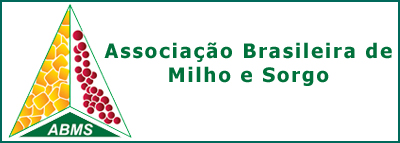DESEMPENHO DA PRODUTIVIDADE DE ESPIGAS DE MILHO VERDE SOB DIFERENTES REGIMES HÍDRICOS
DOI:
https://doi.org/10.18512/1980-6477/rbms.v16n1p94-108Keywords:
espiga verdeAbstract
RESUMO- O cultivo do milho verde irrigado está em expansão na região Nordeste do Brasil e há uma forte demanda. Entretanto, há necessidade de informações técnica e cientifica sobre o manejo de irrigação adequado. O objetivo deste trabalho foi avaliar o efeito de diferentes lâminas de irrigação sobre os componentes de produção e a produtividade de espigas verde do híbrido duplo comercial AG 1051, nas condições edafoclimáticas de Teresina, Piauí. Os tratamentos, dispostos em blocos ao acaso com quatro repetições, constaram de cinco lâminas de irrigação: 165,51, 208,85, 255,32, 304,39 e 340,57 mm. Durante a condução do experimento, a precipitação não ultrapassou 17 mm, a umidade relativa do ar manteve-se na faixa de 62% a 68% e as temperaturas do ar mínimas, médias e máximas apresentaram uma variação entre 22 °C e 35 °C. Os resultados de produtividade de espiga verde empalhada e despalhada foram de 13.453,13 kg ha-1 e 8.465,62 kg ha-1, respectivamente, obtidos com a lâmina de irrigação de 340,57 mm. Os componentes de produção comprimento e diâmetro de espiga empalhada e despalhada, média de grãos por espiga e número de grãos por fileiras foram os que melhor contribuíram para esses resultados.
Palavras-chave: aspersão, espiga comercial, híbrido, irrigação.
PRODUCTIVITY OF GREEN CORN UNDER DIFFERENT WATER MANAGEMENT SYSTEMS
ABSTRACT - The cultivation of irrigated green corn is growing in the Northeast region of Brazil and there is a strong demand. However, there is a need for technical and scientific information on the proper management of irrigation. The aim of this study was to evaluate the effect of different irrigation levels on the yield components and productivity of green ears double hybrid commercial AG 1051, at conditions of Teresina, Piauí, Brazil. The treatments were arranged in a randomized block design with four replications, consisted of five irrigation 165.51, 208.85, 255.32, 304.39 and 340.57 mm. During the experiment, rainfall did not exceed 17 mm, relative humidity remained in the range of 62% to 68% and the minimum, medium and maximum temperatures showed a variation between 22 °C and 35 °C. Productivity results of green spike with and without straw were 13,453.13 kg ha-1 and 8,465.62 kg ha-1 respectively obtained with the irrigation depth of 340, 57 mm. The components of production length and diameter of spike with and without straw, average grains per spike and number of grains per row were the best that contributed to these results.
Keywords: aspersion, commercial ear, hybrid, irrigation.
Downloads
Published
How to Cite
Issue
Section
License
Authors retain copyright and grant the journal right of first publication with the work simultaneously licensed under the Creative Commons Attribution License that allows the sharing of work and recognition of the work of authorship and initial publication in this journal.
Authors are able to take on additional contracts separately for non-exclusive distribution of the version of the paper published in this journal (eg, in an institutional repository or publish as a book), with acknowledgment of its initial publication in this journal.
Authors are permitted and encouraged to post their work online (eg, in institutional repositories or on their website) at any point before or during the editorial process, as this may leadto productive exchanges, as well as increase the impact and citation of published work.



